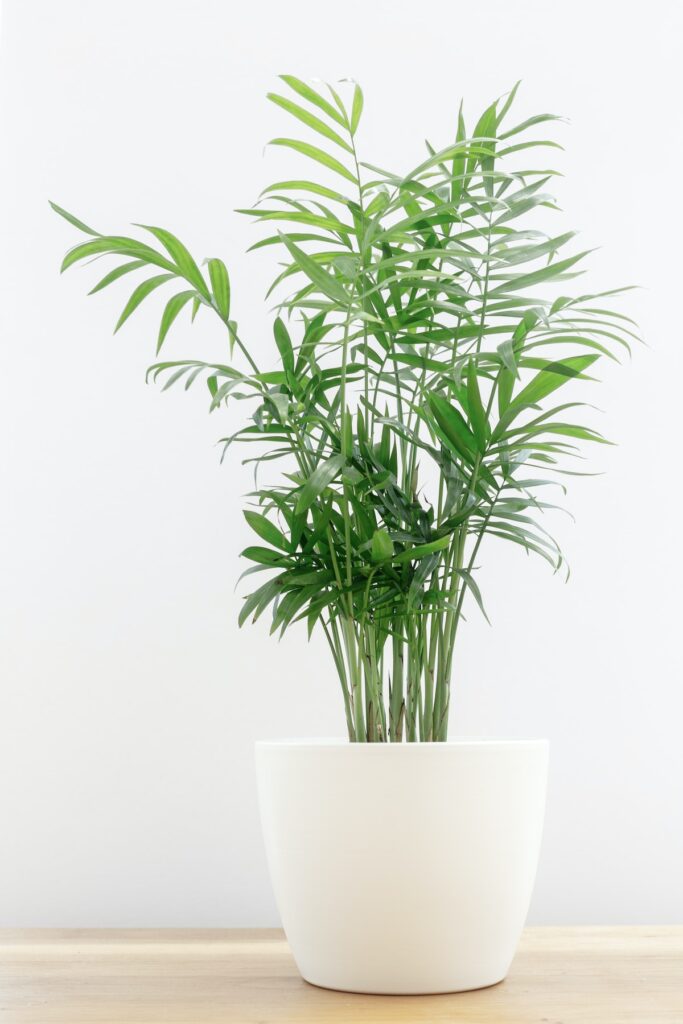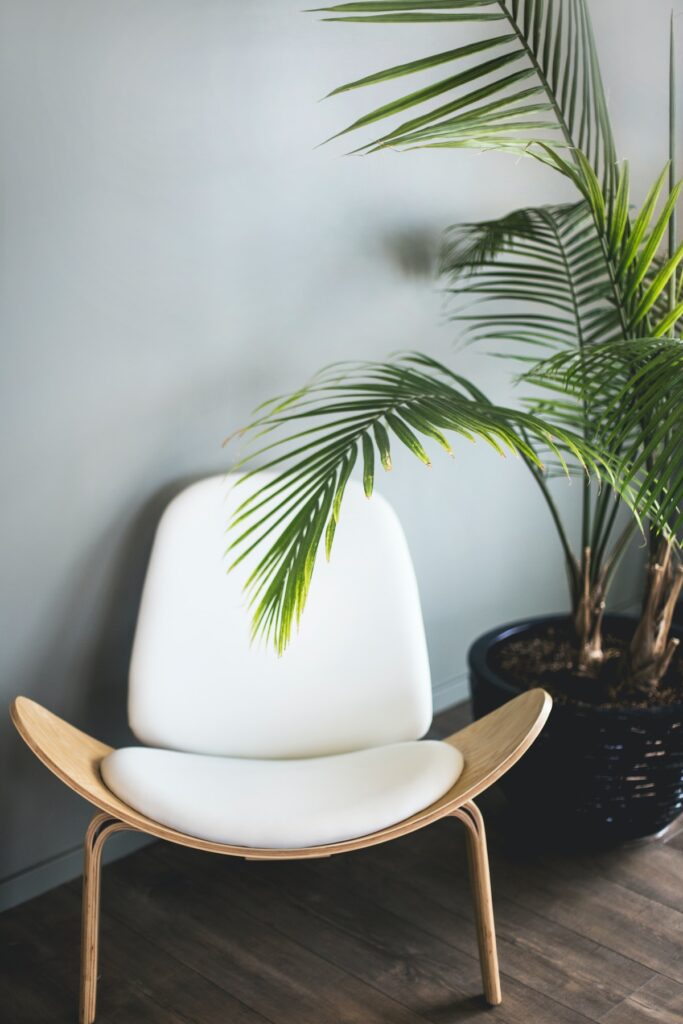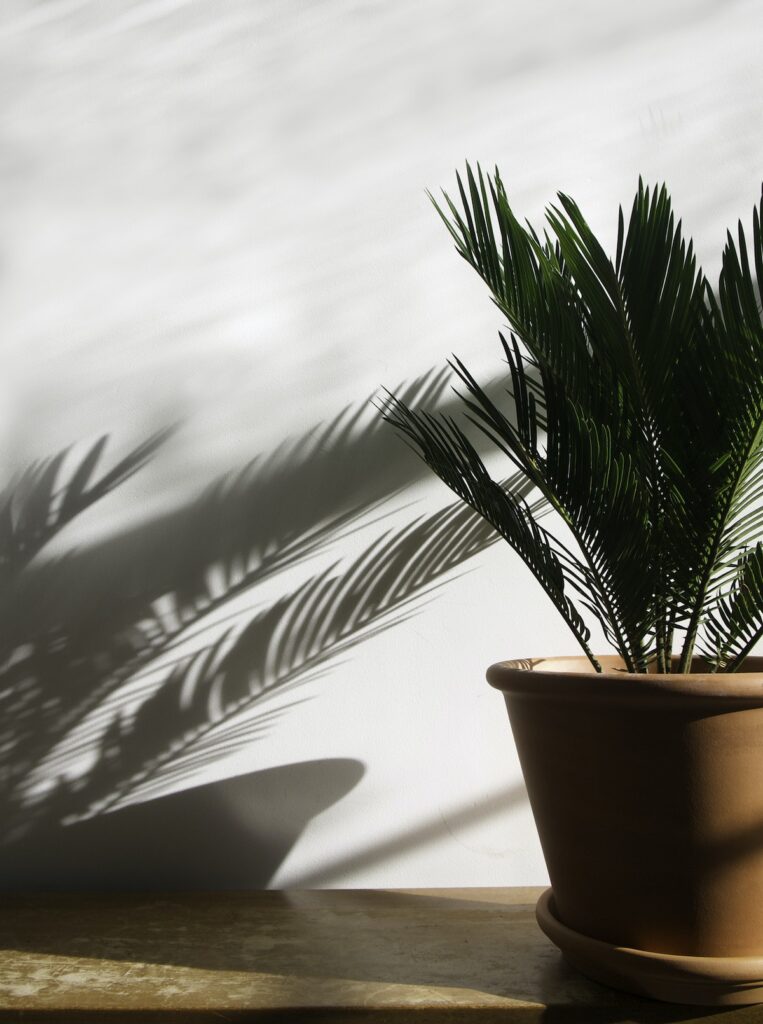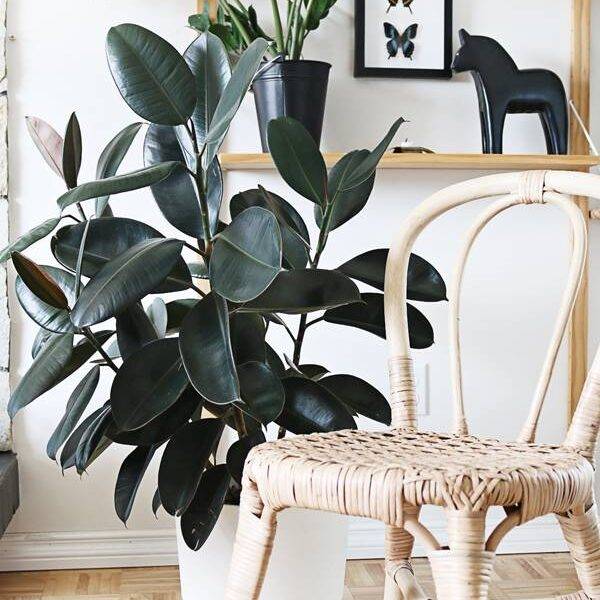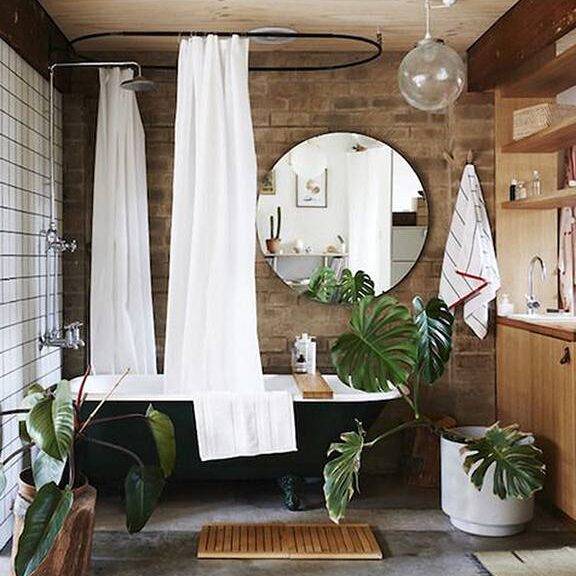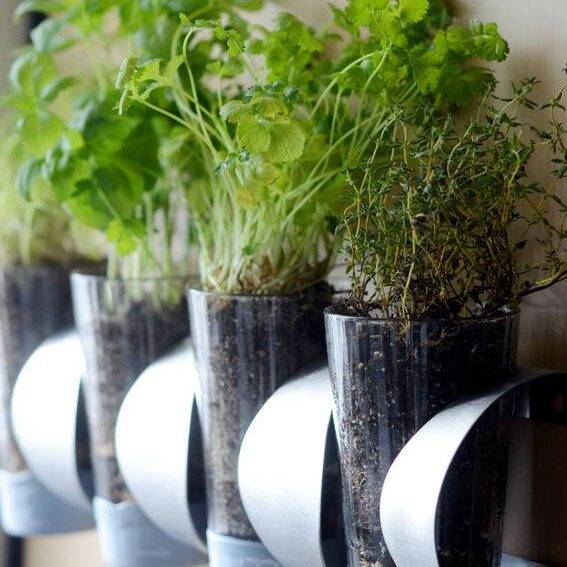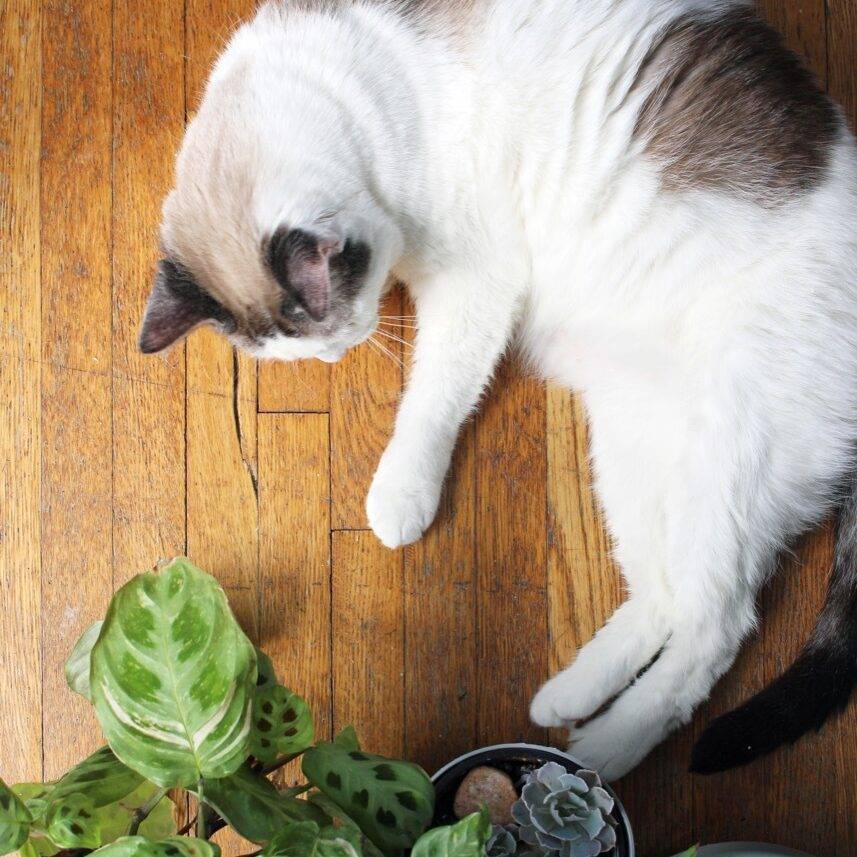Want to wow guests or turn your home into a tropical escape? Indoor palm trees are a great way to add the tranquility you’ve always wanted to your space. Not only are they aesthetically pleasing, but they also improve indoor air quality by filtering out toxins. Yep, you can refresh and recharge figuratively and literally.
If you’re looking for brown thumb-friendly, low-maintenance greenery or are new to indoor gardening, you’re in the right place. In this list, we’ll introduce you to 20 easy indoor palm trees, with a detailed description and some helpful care tips. Think about which palm fits your vibe, or plan to get them all – we promise we won’t judge.
20 Beautiful Indoor Palm Trees
1. Parlor Palm (Chamaedorea elegans)
The ever-so-elegant Parlor Palm is a popular choice among indoor gardeners because its known for its adaptability and appearance. An excellent choice for beginners, this palm checks off all the boxes for a low-maintenance plant. This palm has delicate, feather-like fronds that arch gracefully, creating a lush, tropical ambiance in your home.
- Light: Tolerates low light but prefers bright, indirect sunlight.
- Watering: Allow the top inch of soil to dry out between waterings.
- Size: Typically grows to a height of 2-4 feet indoors.
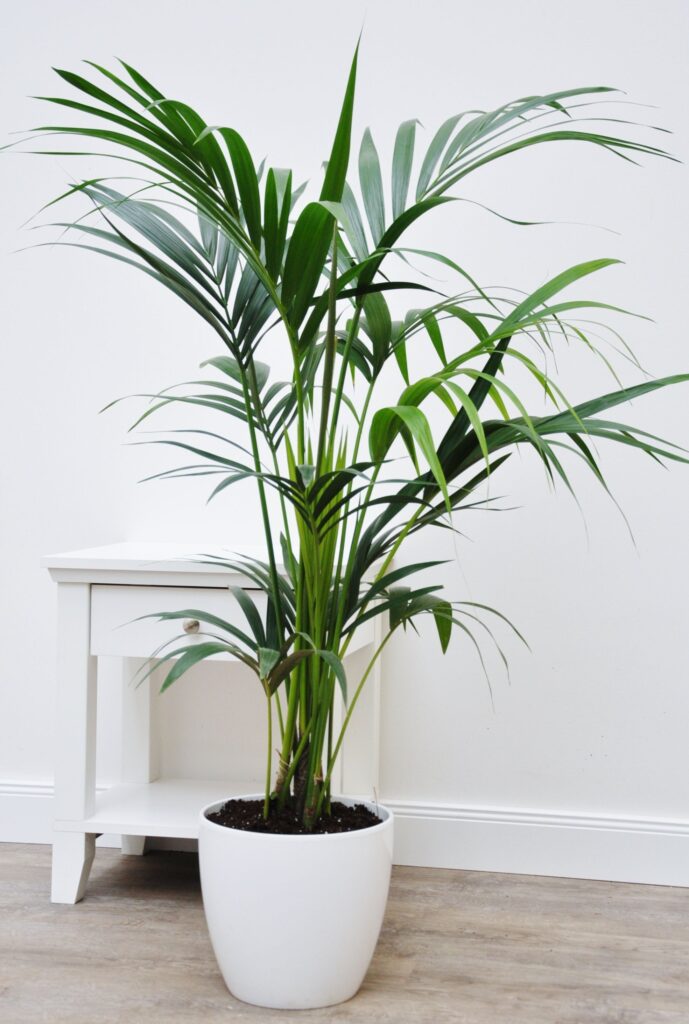 Der Palmenmann GmbH
Der Palmenmann GmbH2. Kentia Palm (Howea forsteriana)
The durable and feathery Kentia Palm, also known as the Sentry Palm, is a classic choice for indoor palm tree lovers. It’s a popular addition to indoor spaces thanks to its strong and sleek fronds. This palm can also handle lower light conditions, making it versatile and suitable for different rooms in your home.
- Light: Thrives in low to moderate light.
- Water: Allow the soil to partially dry out before watering.
- Size: Grows slowly. Can reach heights of 6-12 feet indoors.
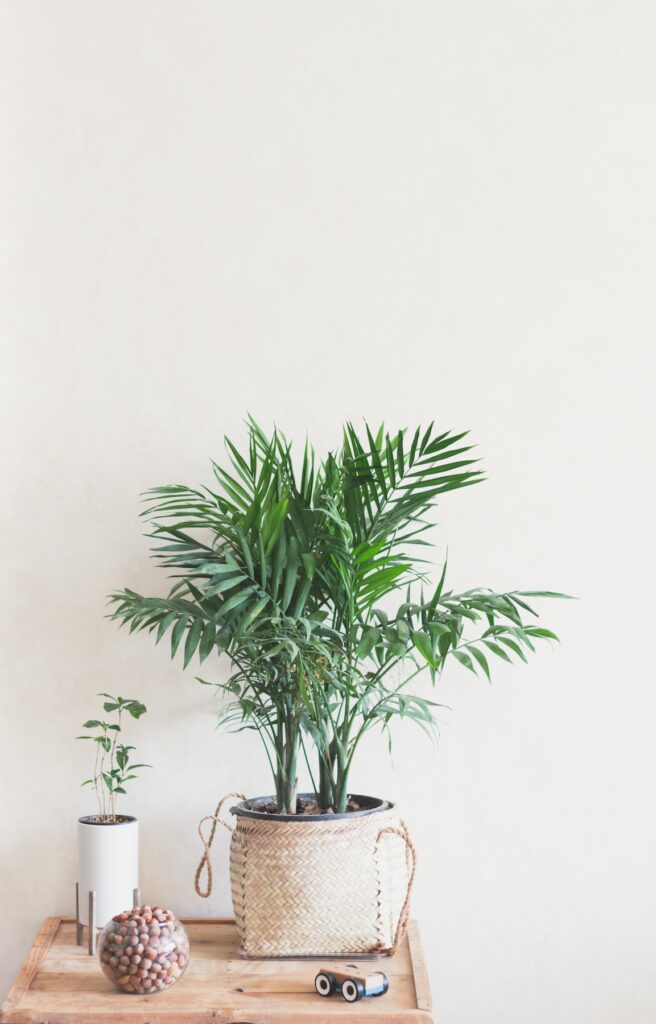
3. Areca Palm (Dypsis lutescens)
The Areca Palm, often called the Butterfly Palm, is prized for its lush appearance and air-purifying qualities. Its fronds create a strong visual impact, making it a favorite choice for larger indoor spaces. Try using this palm as a focal point in your home.
- Light: Prefers bright, indirect sunlight but can tolerate direct morning sunlight.
- Water: Keep the soil evenly moist, allowing the top inch to dry out before watering.
- Size: Can grow up to 7 feet tall indoors.
4. Bamboo Palm (Chamaedorea seifrizii)
The Bamboo Palm, also known as the Reed Palm, is a versatile and compact palm that thrives indoors. Its slender, bamboo-like stems make it a perfect choice for homes and offices. This palm is adaptable and can tolerate lower light conditions. A perfect choice for beginners.
- Light: Thrives in low to moderate indirect light.
- Water: Keep the soil consistently moist but not waterlogged.
- Size: Typically reaches a height of 4-7 feet indoors.
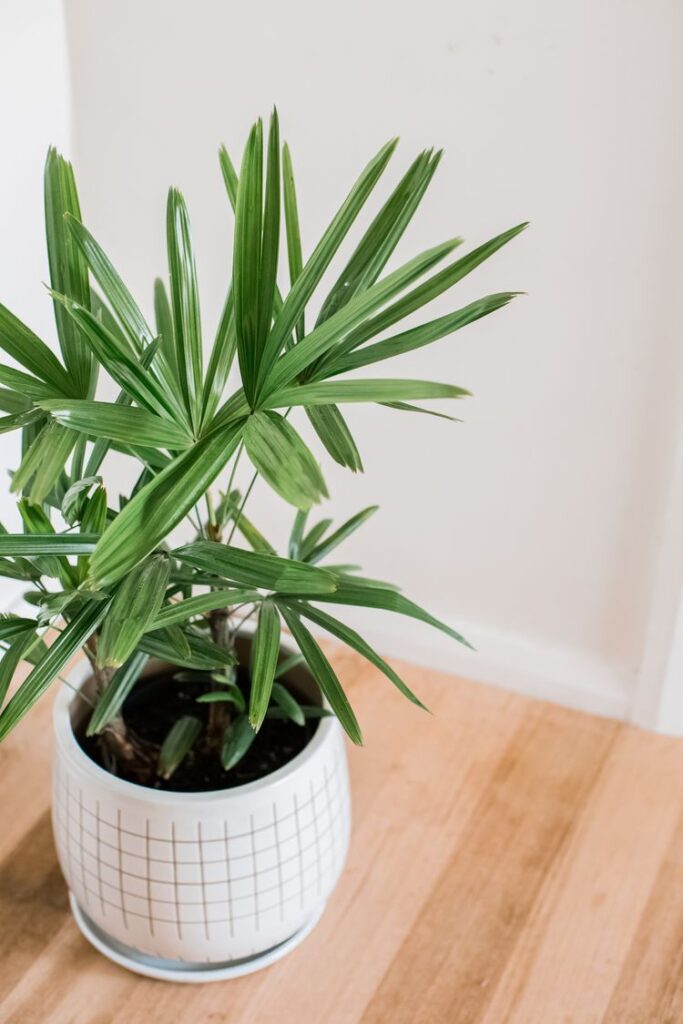 The Spruce
The Spruce5. Lady Palm (Rhapis excelsa)
The Lady Palm is a popular choice for indoor spaces, known for its fan-shaped fronds and adaptability to low light conditions. Its bushy appearance adds a touch of beauty to any room, and it’s particularly well-suited for corners or as a decorative focal point.
- Light: Thrives in low to moderate indirect light.
- Water: Allow the top inch of soil to dry out before watering.
- Size: Grows slowly and can reach heights of 5-7 feet indoors.
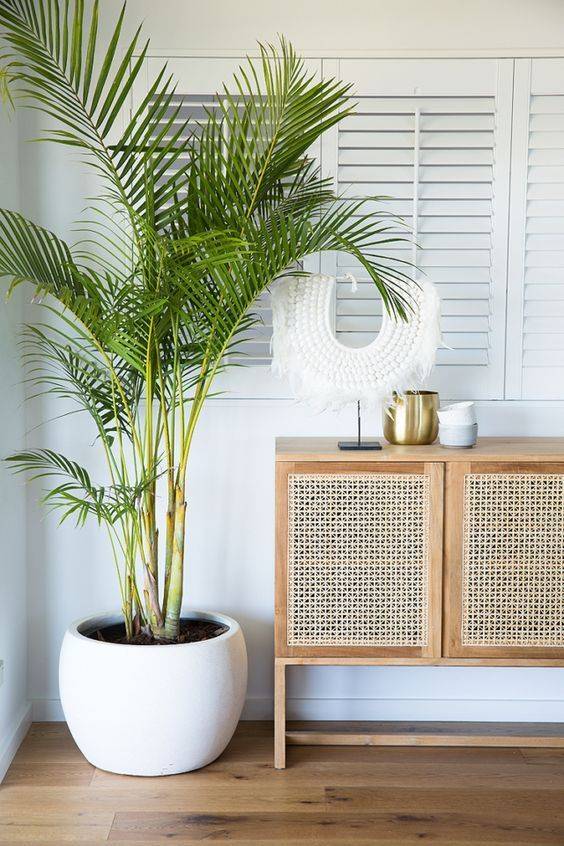 Tuvalu Home
Tuvalu Home6. Majesty Palm (Ravenea rivularis)
Majesty Palms are prized for their regalness because they feature feathery fronds that arch gracefully. While they require slightly more care than some other indoor palm trees, they are worth the effort for their striking visual impact. Majesty Palms are ideal for rooms with bright, indirect light.
- Light: Requires bright, indirect sunlight.
- Water: Keep the soil consistently moist but not waterlogged.
- Size: Can grow up to 10 feet tall indoors.
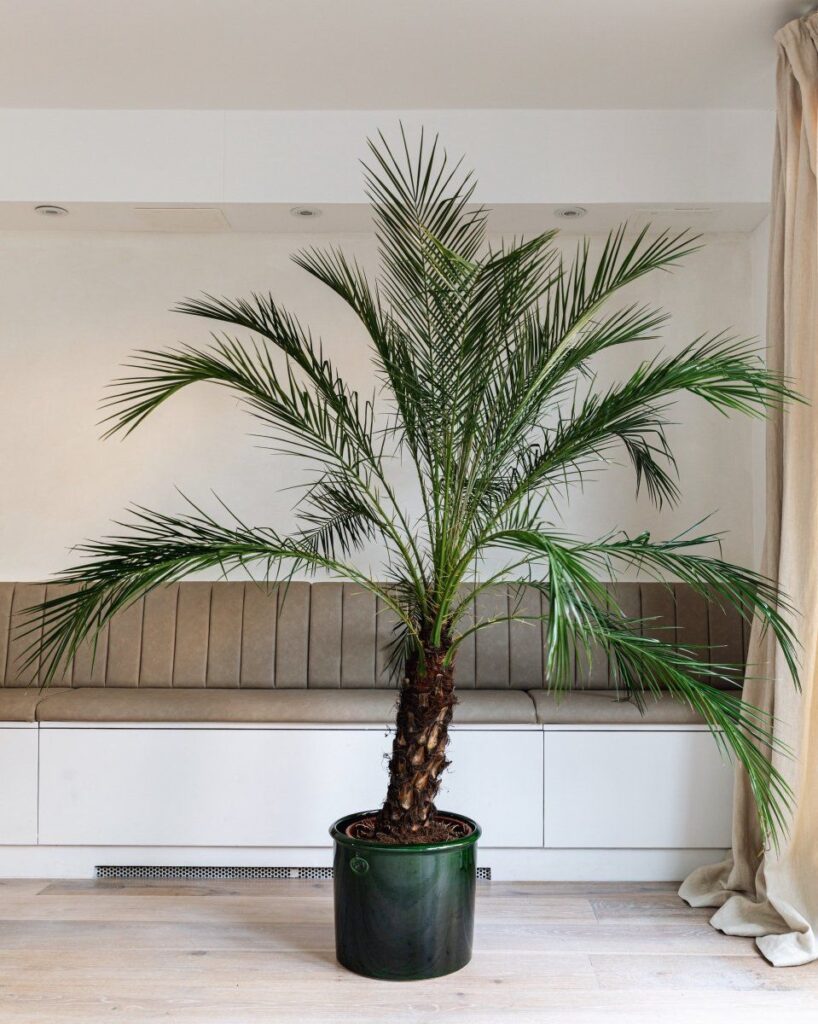 Plant Drop
Plant Drop7. Pygmy Date Palm (Phoenix roebelenii)
The Pygmy Date Palm is a compact palm with slender fronds. It’s an excellent choice for smaller indoor spaces, which can fit on tabletops or window sills. This palm thrives in bright, indirect light, making it ideal for sunny spots in your home.
- Light: Prefers bright, indirect sunlight.
- Water: Keep the soil consistently moist but not waterlogged.
- Size: Typically grows to 6-10 feet indoors.

8. Ponytail Palm (Beaucarnea recurvata)
The Ponytail Palm is a unique indoor plant with a distinctive appearance. Its swollen trunk and long, cascading leaves give it a whimsical, almost prehistoric look. This palm is exceptionally low-maintenance and can thrive in various light conditions, including bright indirect light.
- Light: Tolerates low to bright indirect light.
- Water: Allow the soil to dry out completely before watering.
- Size: Can reach heights of 6-8 feet indoors.
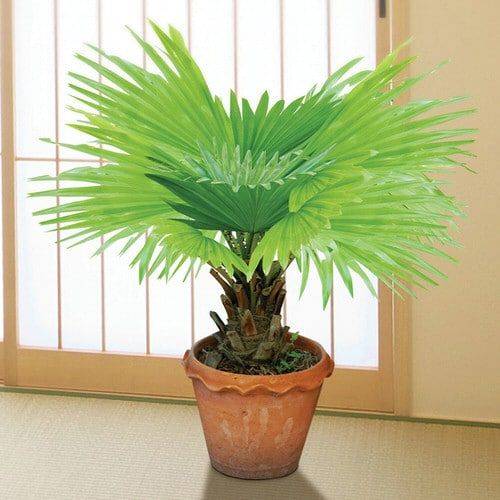 Balcony Garden Web
Balcony Garden Web9. Dwarf Palmetto (Sabal minor)
The Dwarf Palmetto is a native North American palm known for its adaptability. It’s an excellent choice for indoor gardeners in colder climates. This palm features fan-shaped fronds and can tolerate lower light conditions, making it a versatile option for your home.
- Light: Tolerates low to moderate indirect light.
- Water: Allow the top inch of soil to dry completely before watering.
- Size: Typically grows to 2-4 feet indoors.
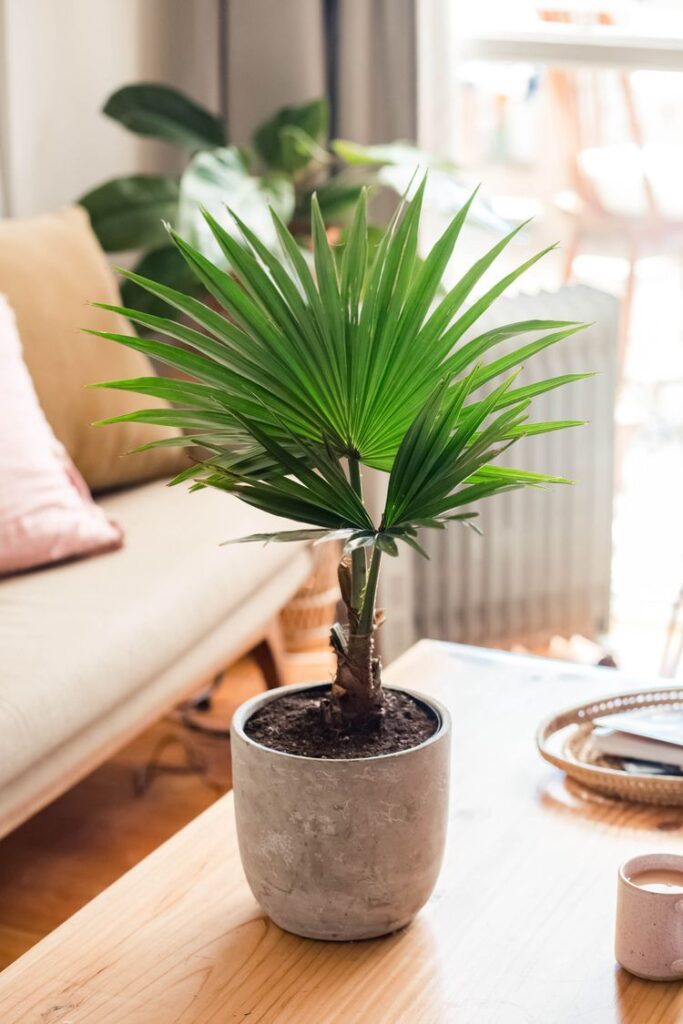 The Spruce
The Spruce10. Chinese Fan Palm (Livistona chinensis)
Chinese Fan Palms boast wide, fan-shaped leaves and dark green fronds. It’s a charming addition to indoor spaces, adding a touch of the tropics to your decor. This palm is fairly low-maintenance and a good fit for beginners.
- Light: Tolerates low to moderate indirect light.
- Water: Keep the soil consistently moist but not waterlogged.
- Size: Can grow up to 5-7 feet tall indoors.
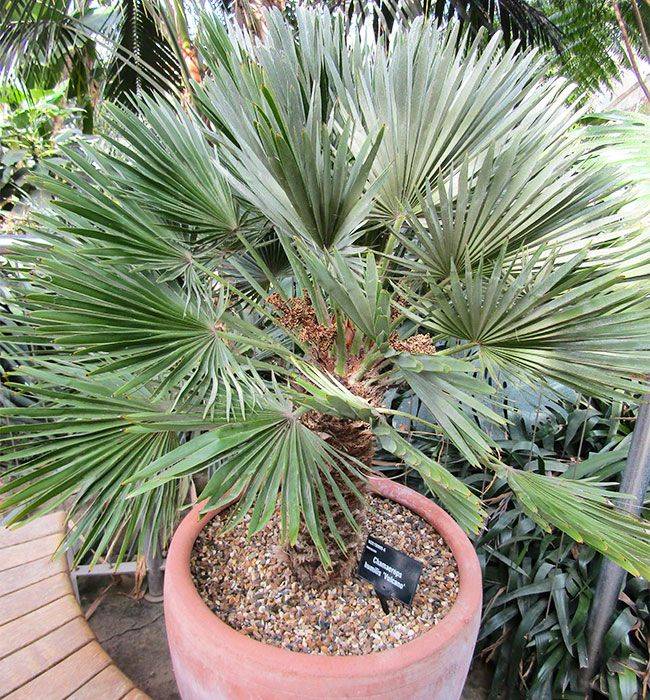 Florida-palm-trees.com
Florida-palm-trees.com11. European Fan Palm (Chamaerops humilis)
The European Fan Palm is a slow-growing and easygoing palm plant that can thrive indoors or outdoors. It features fan-shaped fronds and a compact growth habit, ideal for smaller spaces. As a houseplant, this palm thrives in moderate indirect light.
- Light: Prefers moderate indirect light.
- Water: Allow the top inch of soil to dry completely before watering.
- Size: Typically reaches a height of 3-5 feet indoors.
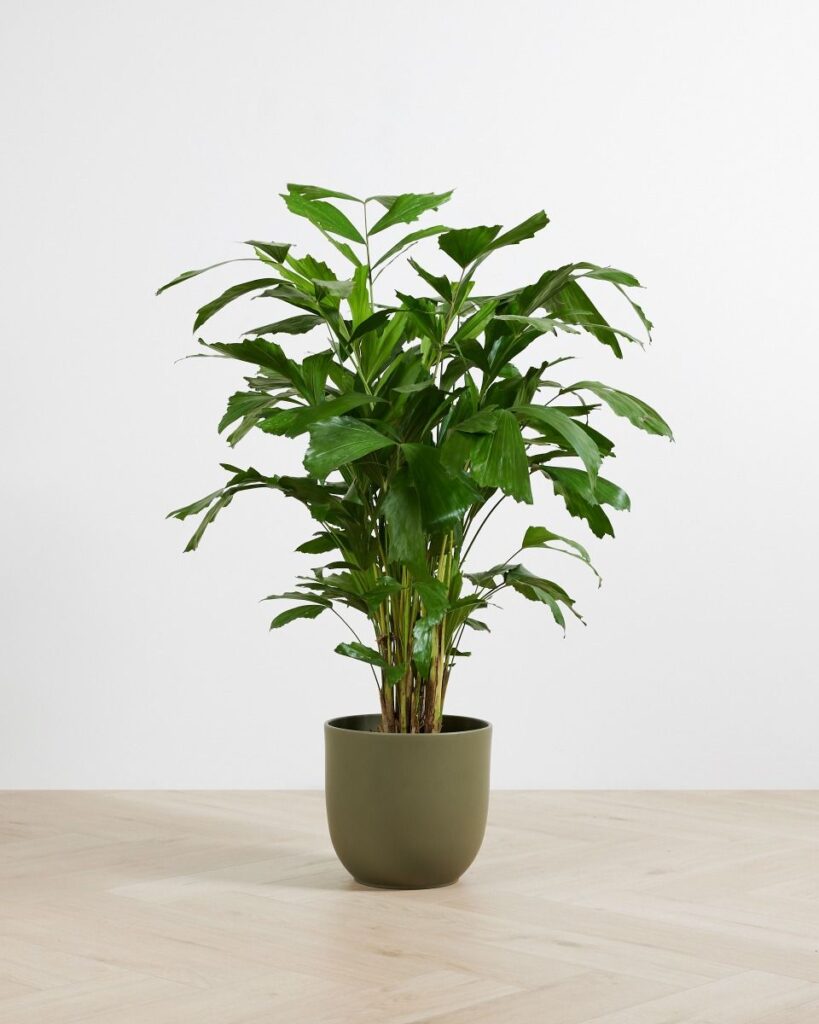 Plnts.com
Plnts.com12. Fishtail Palm (Caryota spp.)
Fishtail Palms are unique and striking with their fishtail-shaped fronds. While they require slightly more care than other indoor palm trees, they are worth the extra love and attention for their captivating appearance. Fishtail Palms thrive in moderate to bright indirect light.
- Light: Requires bright indirect light.
- Water: Keep the soil consistently moist but not waterlogged.
- Size: Can grow up to 6-10 feet tall indoors.
13. Sago Palm (Cycas revoluta)
Although not a true palm, the Sago Palm closely resembles one and is a great choice for indoor gardening. Its striking appearance features feathery fronds emerging from a rugged trunk. This palm is well-suited for dry environments.
- Light: Prefers bright indirect light.
- Water: Allow the soil to dry out partially before watering.
- Size: Typically reaches a height of 2-4 feet indoors.
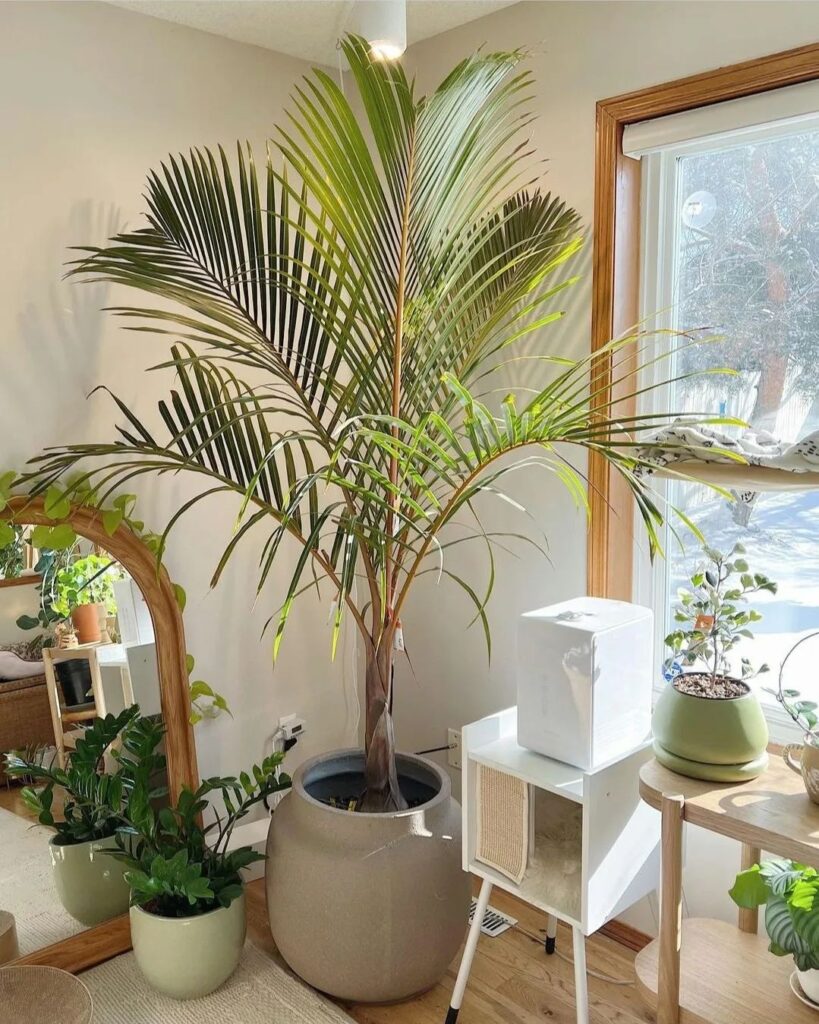 urbangardenerto
urbangardenerto14. Spindle Palm (Hyophorbe verschaffeltii)
The Spindle Palm is known for its slender trunk and attractive foliage. Its unique appearance makes it a lovely addition to indoor spaces with bright, indirect light. This palm can be a conversation starter and a focal point in your home.
- Light: Requires bright indirect light.
- Water: Keep the soil consistently moist but not waterlogged.
- Size: Can grow up to 6-10 feet tall indoors.
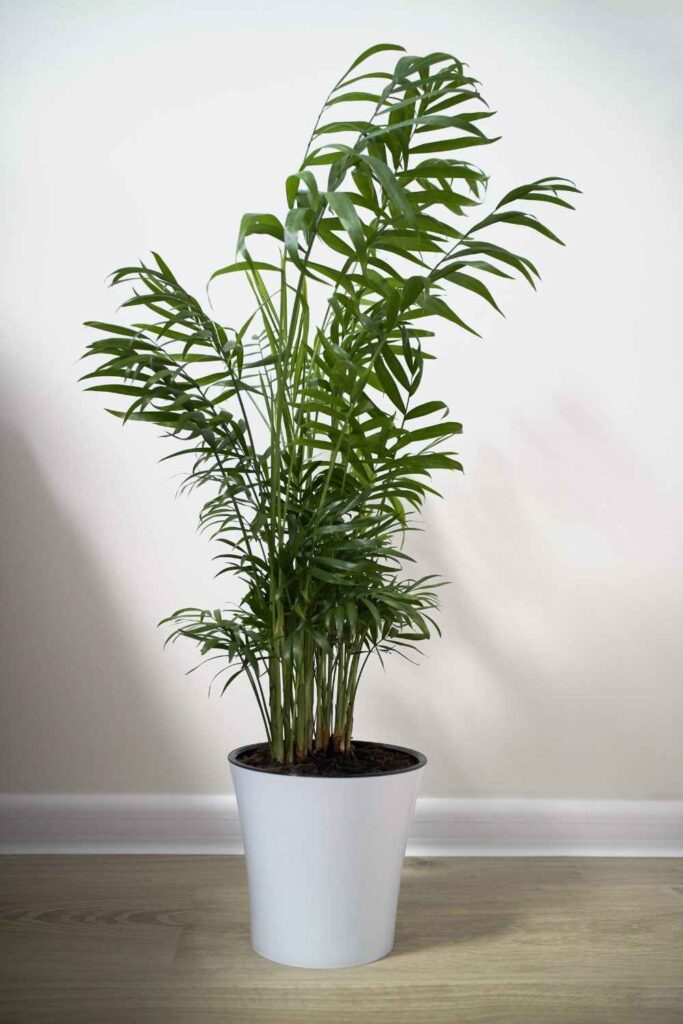 The contended plant
The contended plant15. Cat Palm (Chamaedorea cataractarum)
The Cat Palm is prized for its arching fronds and adaptability to lower light levels, making it perfect for homes with limited natural light. Its bushy appearance adds a luxurious, elevated look to your traditional houseplant environment.
- Light: Tolerates low to moderate indirect light.
- Water: Keep the soil consistently moist but not waterlogged.
- Size: Typically grows to a height of 4-6 feet indoors.
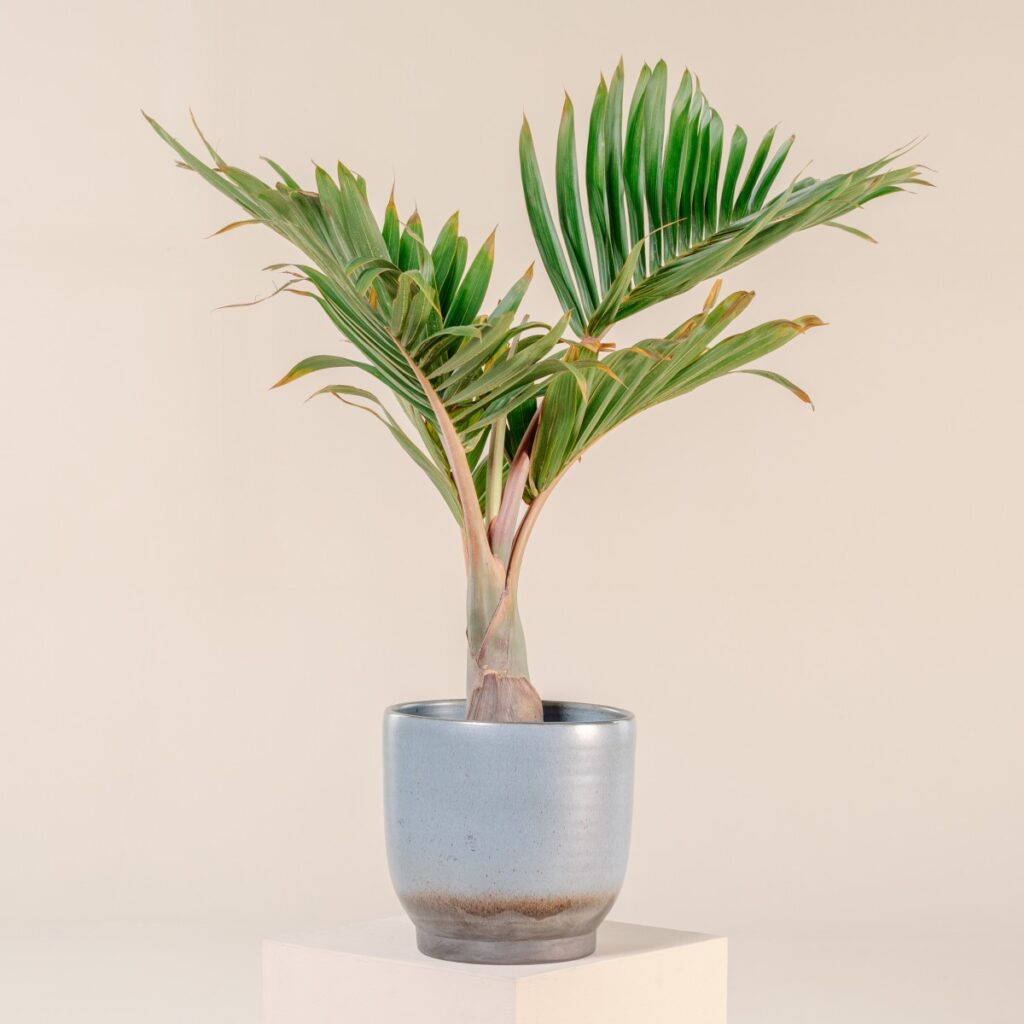 The Palm Centre
The Palm Centre16. Bottle Palm (Hyophorbe lagenicaulis)
The Bottle Palm gets its name from its swollen trunk, resembling a bottle. It’s a unique and eye-catching palm that can thrive in bright, indirect light. This palm can be a fascinating conversation starter and a decorative addition to your home.
- Light: Requires bright indirect light.
- Water: Allow the soil to dry out partially before watering.
- Size: Typically reaches a height of 4-6 feet indoors.
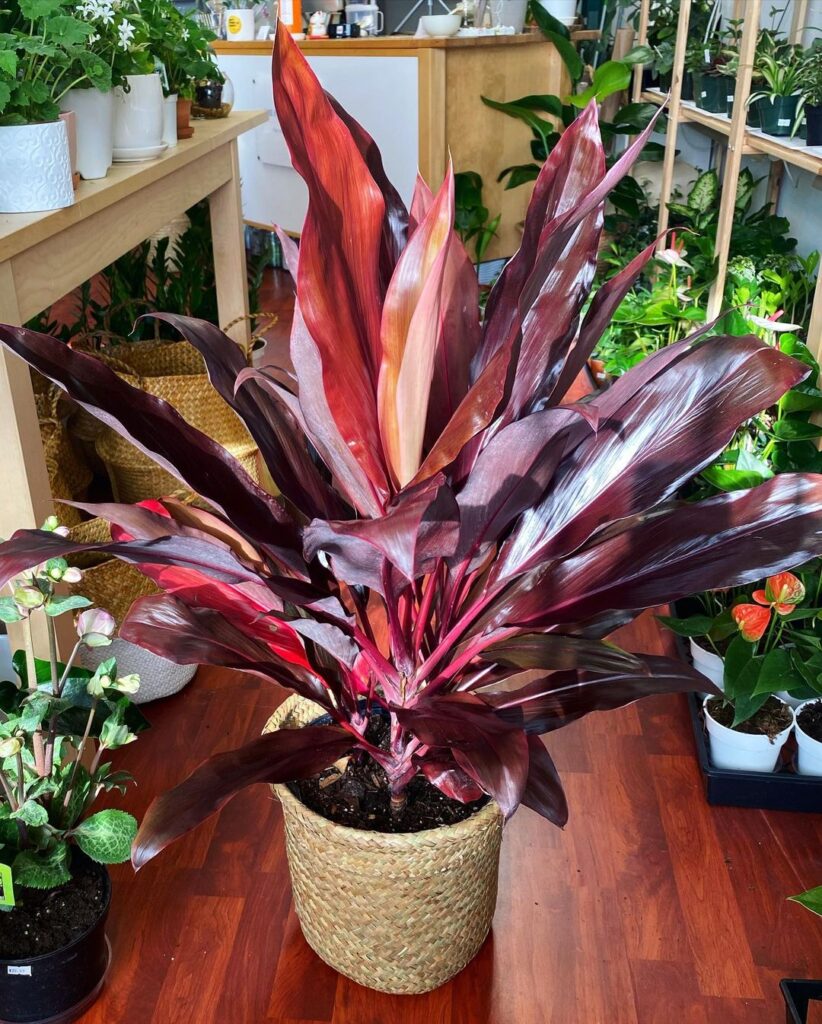 Plantsitter_california
Plantsitter_california17. Palm Lily (Cordyline fruticosa)
Although not a true palm, the Palm Lily (also known as the Ti plant) is often mistaken for one due to its palm-like appearance. It’s an attractive and low-maintenance option for indoor palm plants. This plant can tolerate various light conditions.
- Light: Tolerates low to bright indirect light.
- Water: Allow the top inch of soil to dry out before watering.
- Size: Typically grows to 2-5 feet high indoors.
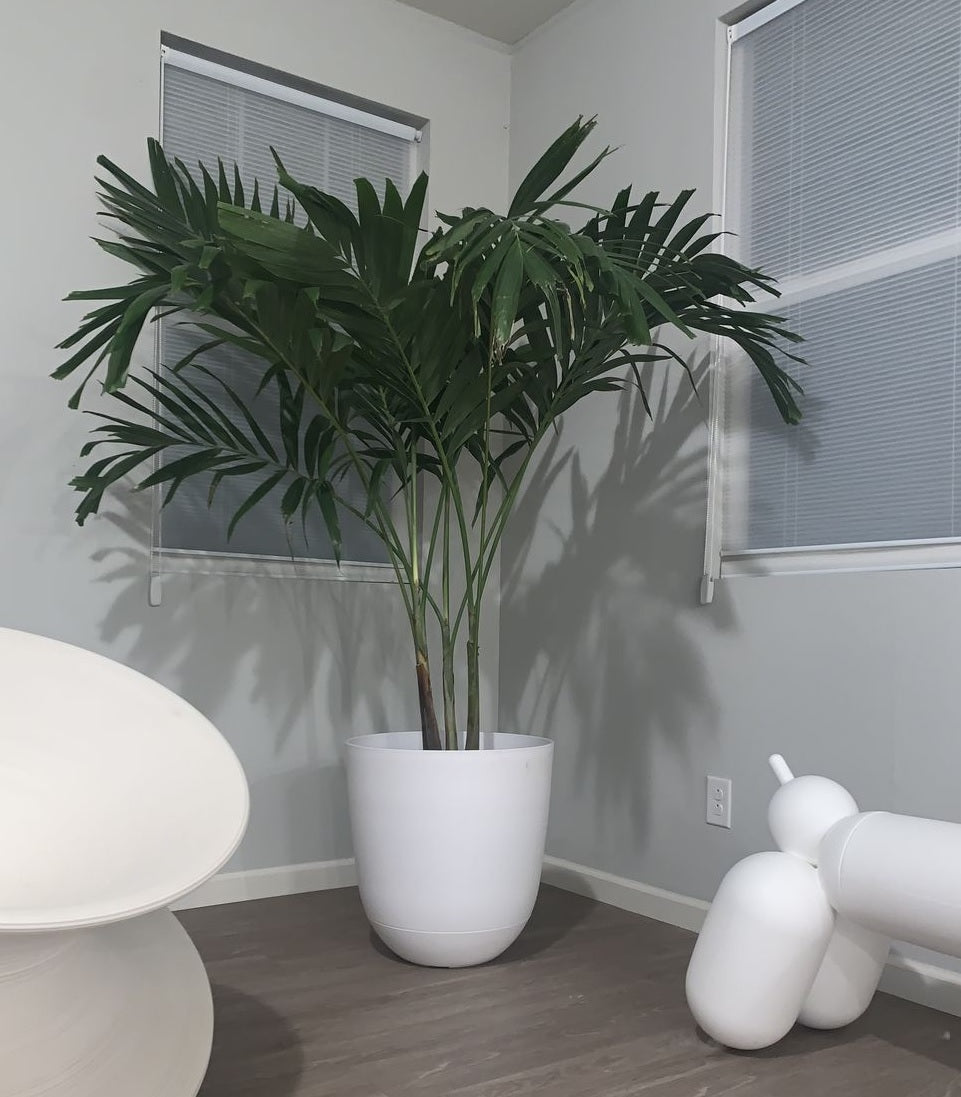
18. Mango Palm (Veitchia merrillii)
The Mango Palm, also known as the Manila Palm or the Christmas Palm, is great for bright indoor spaces. Its slender trunk gives it a captivating appearance. Choose this palm if you’re looking for a stunning centerpiece in your home.
- Light: Requires bright indirect light.
- Water: Keep the soil moist, but ensure it isn’t waterlogged.
- Size: Can grow up to 8-12 feet tall indoors.
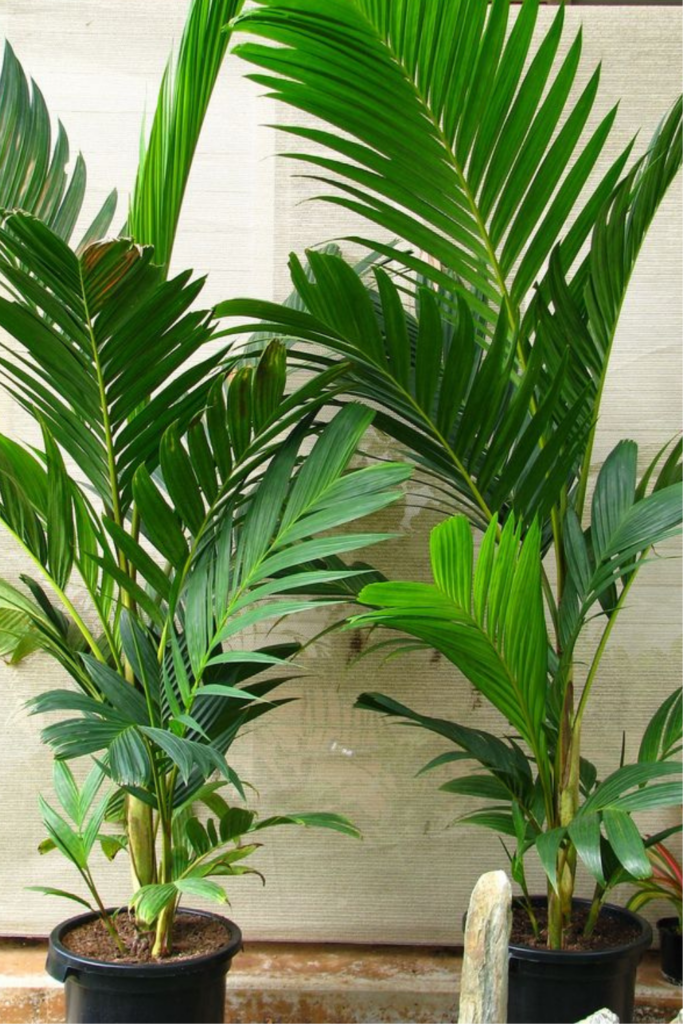 Flickr
Flickr19. Ivory Cane Palm (Pinanga coronata)
The gorgeous Ivory Cane Palm can grow up to 12 feet in a container. It blooms pink and matures to red with purple berries. Partial shade is preferred, and keeping it in a small pot to maintain its size (since it can grow up to 20 feet) is best. When repotting, leave 50 feet of clearance for the roots.
- Light: Thrives with partial direct sunlight and/or shade.
- Water: When the topsoil is dry (½-1 inch).
- Size: Can grow up to 12 feet tall indoors.
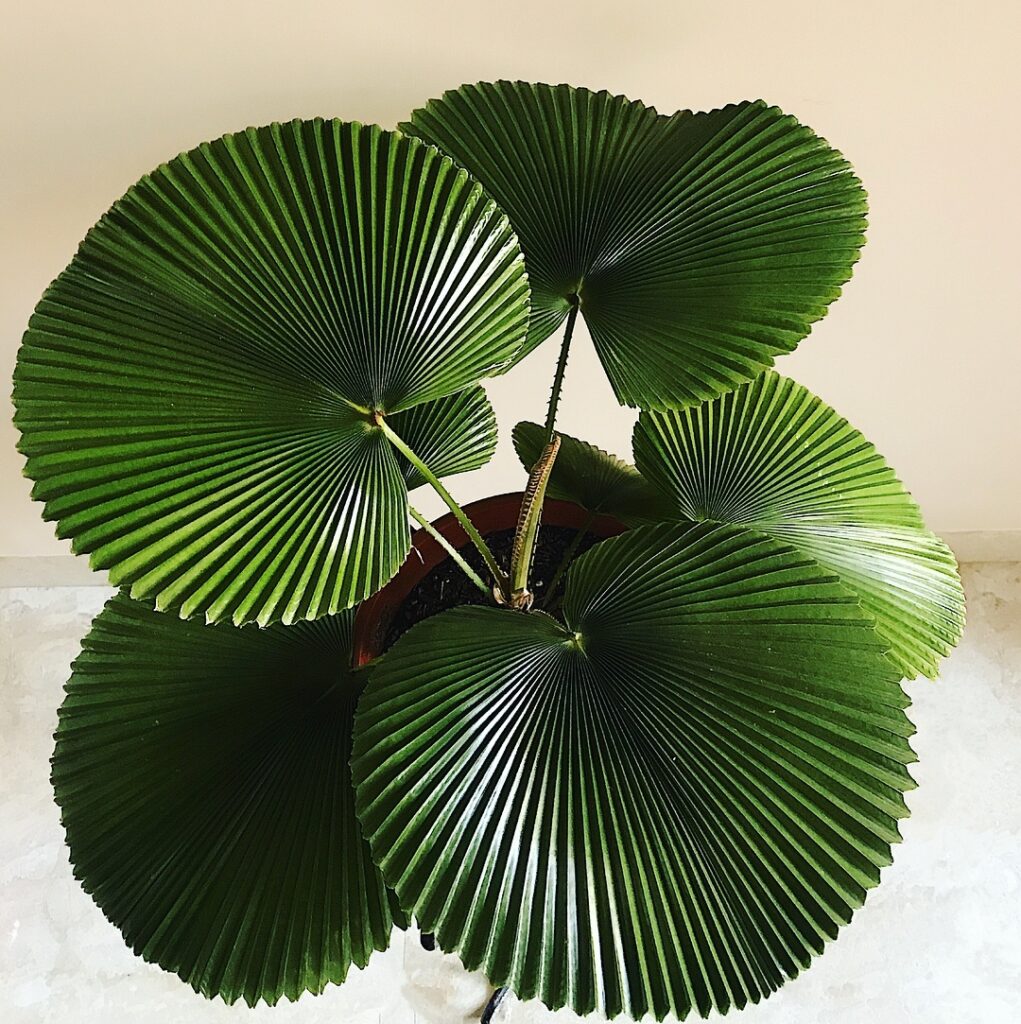 Prickldn
Prickldn20. Ruffled Fan Palm (Licuala grandis)
This Ruffled Fan Palm is native to Australia, with dramatic circular leaves resembling a large fan – this palm is great for adding a unique flair to your home decor. Since it is slow-growing and enjoys cooler climates, be sure to keep it away from large windows.
- Light: Prefers indirect sunlight.
- Water: Let the top soil dry completely before watering.
- Size: Typically grows to a height of 6 feet indoors.
Easy Tips for Growing Beautiful Indoor Palm Trees
Now that you’ve checked out our list and hopefully picked a few palm trees that you’d like to call your own, let’s explore some general care tips to help you keep your tropical oasis thriving:
- Lighting: Most indoor palms like bright, indirect light. Aim to place them near a window with filtered sunlight, but try to avoid direct sun exposure, which can burn their leaves.
- Water: Always allow the top inch of soil to dry out before watering your palm. Since overwatering can contribute to root rot, it’s best to err on the side of under-watering and make sure your pots promote proper drainage.
- Humidity: Palms love humid conditions. If your home is dry, occasionally use a humidifier to add moisture to the air or mist the leaves.
- Potting Mix: Try a well-draining potting mix designed for palms or diy it with a mix of perlite, peat moss, and sand.
- Fertilizer: Feed your palm with a balanced, slow-release fertilizer during the growing season (spring and summer). Reduce or stop fertilizing in the winter when growth typically slows down.
- Pruning: Regularly removing brown or yellowing fronds is vital to keep your palm fresh and healthy. To do this, cut with pruning shears.
- Repotting: Palms prefer to be slightly root-bound, so only repot when the plant has outgrown its pot, typically every 2-3 years.
- Pests: Keep palms thriving and common pests away (like scale insects and mealy bugs) with natural pesticide or insecticidal soap.
By following these simple care tips and selecting from a wide variety of indoor palm trees, you can create a lush and vibrant space that brings the beauty of the tropics into your home, even if you don’t have a green thumb. Happy indoor gardening!
